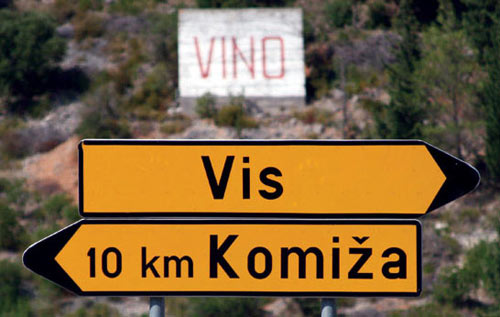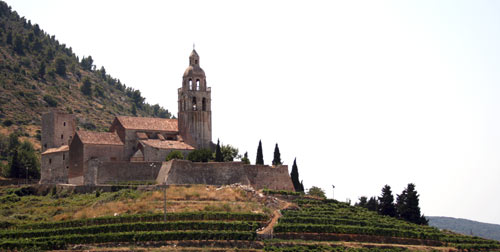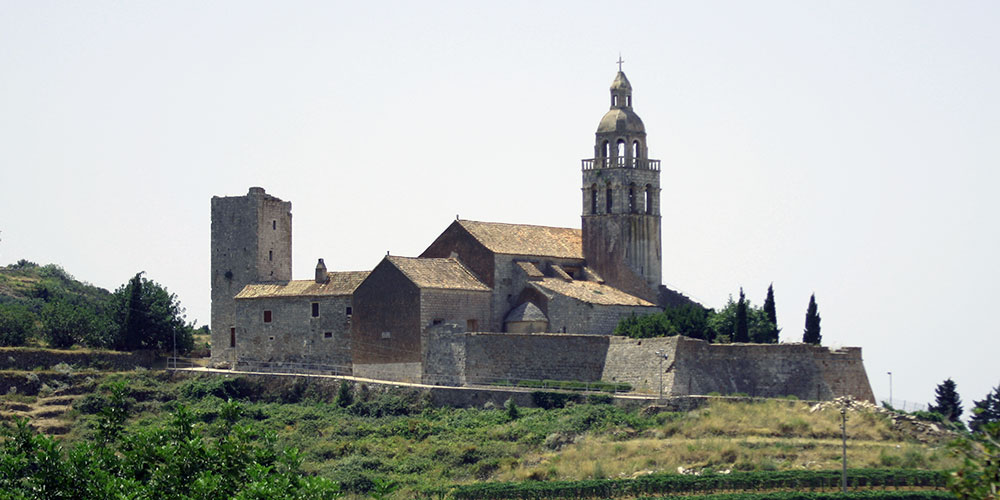
Vis Island has had a storied military history that ultimately led to a great deal of isolation. In WWII, it was the staging ground for British troops as well as the hideout for Tito and the Partisans. After the war, it became a very important naval base for the newly-founded Yugoslavia, and it was at this point where access to the island became extremely limited.
Following the breakup of Yugoslavia, Croatia decided not to use the island for a naval base and the travel restrictions were lifted in 1989. With this, regular ferry service started and all those who wanted to, began to visit the island and tourism has slowly started to develop over the years.
This isolation had a heavy impact on all facets of life for those who live on Vis. In regards to wine, it severely stunted the growth of the industry, as the main source of income was fishing. Despite this, there are a great many grapes grown on Vis and about 20% of all the land suitable for farming is dedicated to growing wine grapes. But, with a perimeter erected around the island for so long, there was really no outside market that the wine could be produced other than some small exports to the mainland. Thus, wine production stagnated. The technology that producers were using froze in place from the 1940’s and a good deal of wine land stopped being farmed.
Fortunately, there is now a rebirth of wine on Vis. Growers are planting more grapes and producing more wine than ever before. This is in no small part to the dearth of tourist money that has started coming in to the island. The beaches are still rather secluded even in high season, but in addition to sunbathing, people explore this island more than the others. They head out to neighboring Biševo island for the Blue Grotto tours, they traipse around the whole island on organized tours and there are even some agencies that organize hiking excursions to Mount Hum, the highest point in Vis at 587m. The island lends itself well to these activities being quite compact at 90 square kilometers in total area and 10 kilometers in width at its widest point.
Vis is the only island that has an established Wine Route. These exist in other locations on the mainland to varying degrees and are usually called Vinska Cesta, or literally, ‘wine road’. Whether it is to make it sound diminutive and cute (Vinski Puti literally translates in to ‘wine path’) or just a dialectic inflection, it is a very good wine route.

The Vinski Puti is easily followed on the main road that goes around the island in a loop from one end at Vis city to the other at Komiža (the two main towns in the island). If one is the slightest bit fit and able to deal with some inclines at each end, it could readily be covered on bicycle. The wine business isn’t quite as booming on Vis as in other parts of Dalmatia, so there isn’t someone waiting at a desk to receive people like you see in places on the mainland. Thus, dropping in can have mixed results with the winemaker often out in the fields or sometimes enjoying a midday nap. Still, people are generally always hospitable even if one is visiting on short notice.
Wineries such as PZ Podšpilje, Sviličić, and Lipanović are just a few that you’ll encounter along the way that are producing reliable Plavac Mali reds as well as Vugava, a white that on Vis is called Bugava. The Plavac tends to run rather dry and a good deal lighter than that on the mainland. The Vugava is also quite light, drifting towards fruity with soft honey tones and is quite pleasant on the hot days that Vis sees. Some of the wineries make a Prošek from it as well.
We talk a great deal more about the wineries of Vis Island as well as the other Croatian wine regions in our Dalmatian enotourism guide.

